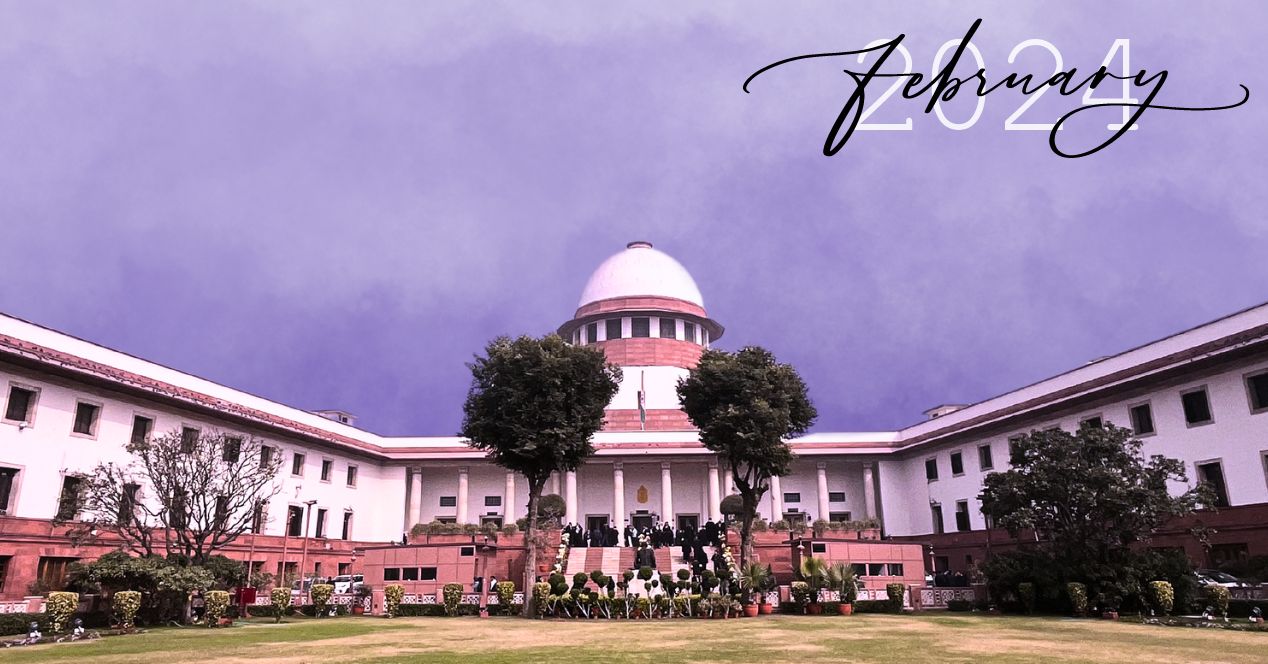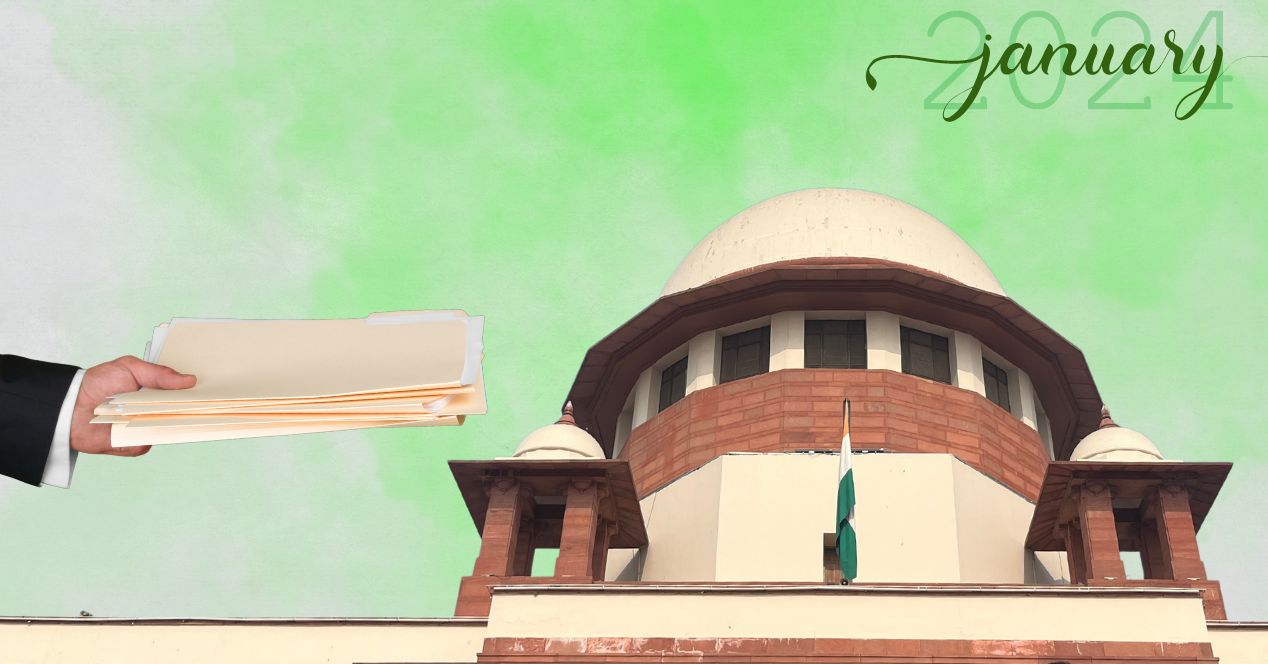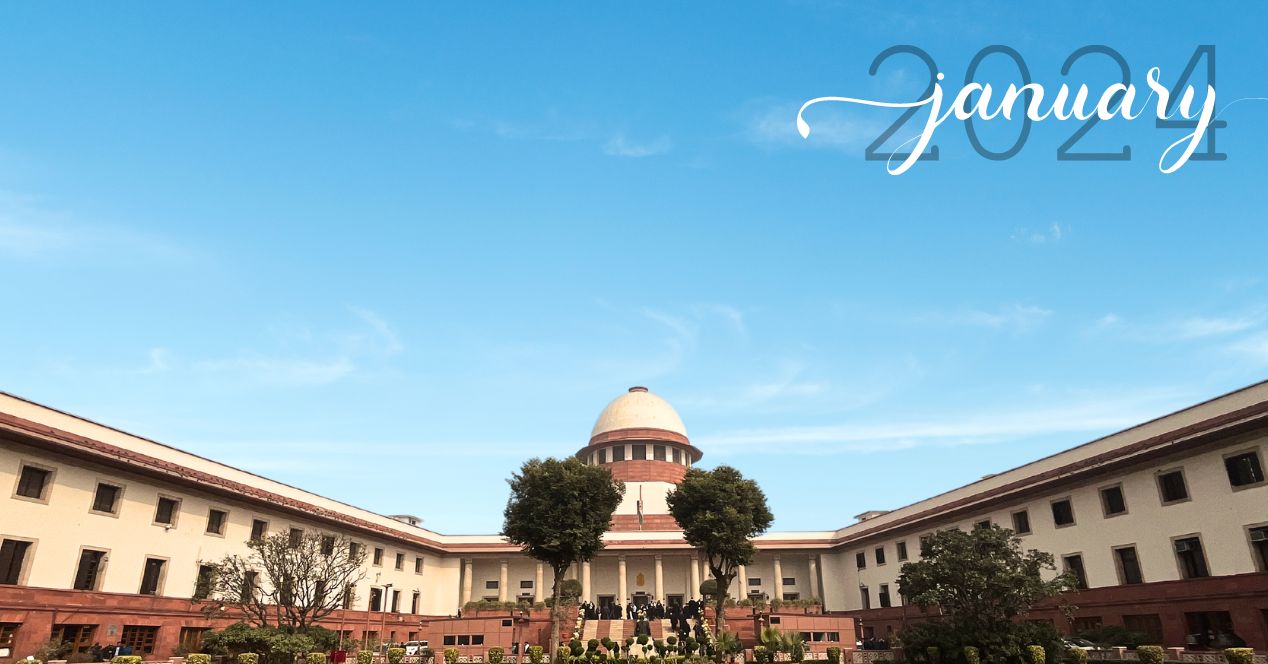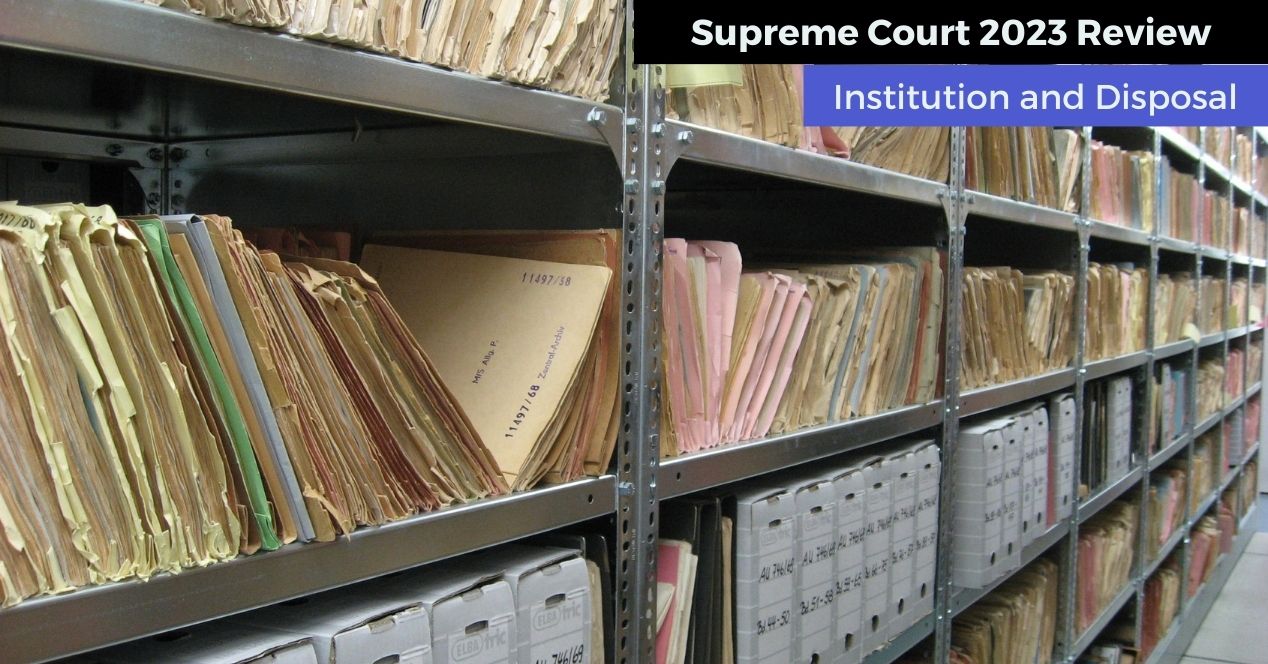Court Data
February 2024: A full-strength Supreme Court continued its healthy disposal streak
The Court’s institution and disposal rate last month was the highest over the past five Februaries

In January 2024, the National Judicial Data Grid (NJDG) indicated that 4964 new cases were instituted at the Supreme Court and 5453 cases were disposed of. This means that the Court cleared more cases than it received at a healthy rate of 109.85 percent in the first month of the year. Considering that the Court was grappling with over 80,000 pending cases at the end of last year, the robust disposal rate in the new year was a healthy sign.
With Justice P.B. Varale’s elevation to the Court on 25 January 2024, February was the first full month of the year where the Court functioned at its full strength of 34 judges. As in January, this Court managed to dispose of more cases than it received last month.
Institution refers to the number of cases that are filed in the court at any given point of time. Disposal indicates the number of cases that a court clears either by dismissing it or by completing hearings and delivering a judgement.
4821 cases filed, 5409 disposed in February
Figure 1 maps the number of cases instituted and disposed of by the Supreme Court in the months of January and February 2024.
Figure 1 above shows that in January 2024, the Court received 4964 cases and disposed of 5453 cases. In February, both these figures saw a slight drop. The top court received 4821 cases (143 less than January) and disposed of 5409 cases (44 cases less than January)
The Court disposed of cases at a rate of 112 percent in February—2.15 percent more than in January.
In February 2024, the average number of cases disposed of by the Court was 257.5 cases (34 cases less than the daily average in January).
In January, the Court worked for 20 days in total with a vacancy for 17 of these days. Further, for seven days in January, seven judges of the Court—20 percent of its sanctioned strength—were occupied in a Constitution Bench to determine whether Aligarh Muslim University could retain its minority status.
In February, the Court worked for a total of 21 days (one day more than January). The month also saw a flurry of Constitution Bench activity. The seven-judge Constitution Bench from January reserved judgement in the Aligarh Muslim University minority status case on 1 February 2024. A new seven-judge bench heard challenges to and reserved judgement on the validity of the creation of sub-classifications within reserved categories for Scheduled Castes for three days between 6 to 8 February 2023. Lastly, over three days in February 2024, a nine-judge bench assembled for the first time since 2020 to determine whether royalty paid by mine leaseholders is a tax.
The pendency of cases in the Supreme Court dropped by over 700 cases in February 2024, bringing the total pending cases of the Court below the 80,000 mark for the time since October 2023.
Institution of cases highest in five years
Figure 2 maps the number of cases instituted at and disposed of by the Supreme Court in the month of February since 2020. This data for the years 2020-2023 is from the Annual Reports of the Supreme Court because a month-wise split for previous years is unavailable on the NJDG.
For three out of the last five years (2020, 2021 and 2022), more cases were filed at the Court than were disposed of in the month of February. 2021 was the year with the least number of cases disposed of—2478 cases, largely due to pandemic-related restrictions.
February 2023 had begun with only 27 sitting judges in the Supreme Court. Five new judges were appointed on 6 February and two more a few days later bringing the Court to its full sanctioned strength. In that month, the Court received 4361 new cases and disposed of 4579 cases.
In 2024, as mentioned above, the Court entered February with a full quorum. Therefore, it is no surprise that it received and disposed of the highest number of cases in the last five years—4821 and 5409 respectively.
Note: In our story on institution and disposal figures from January 2024, we had highlighted a discrepancy in the data available from the NJDG and the Justice Clock on the Supreme Court’s website. Since the numbers on the NJDG seemed to be lagging behind, we surmised that the transfer of information from the Supreme Court to the NJDG was taking time. This month, we collected the February data deep into March—on the 25th, to be exact. There seemed to be no discrepancy between the NDJG and the Justice Clock data for the month of February.




